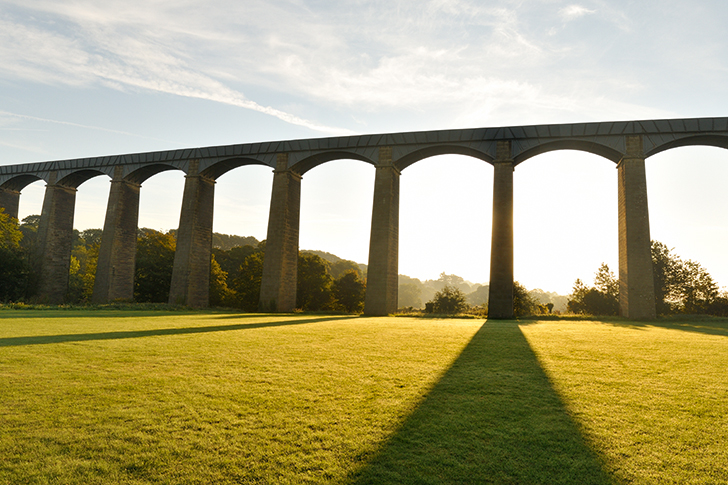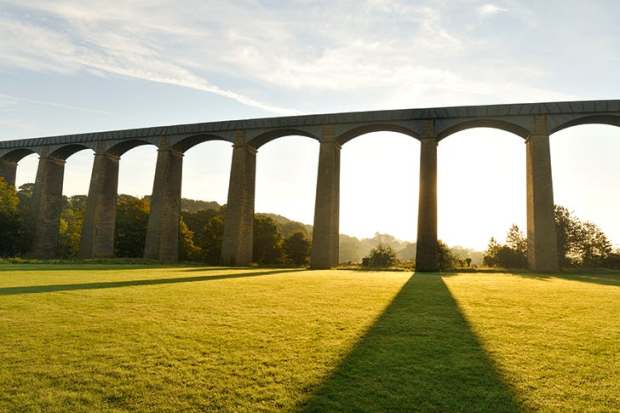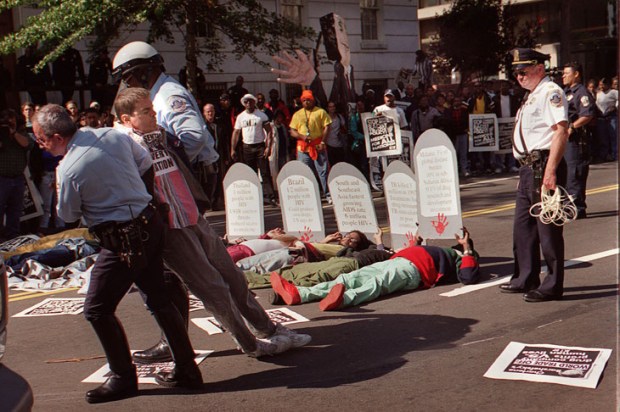During David Cameron’s years as prime minister, an unobtrusive figure could be seen slipping out of the back entrance to Downing Street. At the end of each day, Julian Glover, then Cameron’s chief speechwriter, made his way across St James’s Park to the Institution of Civil Engineers, a Palladian palace off Parliament Square. There, burrowing around in the archives, he wrote the biography of the institution’s first president: Thomas Telford, one of Britain’s forgotten great men.
In his 77 years, Telford built a huge chunk of the infrastructure of Georgian and early Victorian Britain: 17 canals, 37 docks and harbours and 93 bridges and aqueducts. His friend the poet Robert Southey called him ‘Pontifex Maximus’. Telford carved the Caledonian Canal across Scotland, another canal through Sweden, and built more than 1,200 miles of roads.
Practically everything he built is still in use and yet he is forgotten — thanks to the railway. He died at the wrong time, in 1834, just as the railways were spreading across the country. At a stroke, all those canals became largely redundant.
Telford’s three greatest monuments suddenly lost their purpose. The Pontcysyllte Aqueduct, carrying canal boats over the River Dee, became an elegant curiosity. The Caledonian Canal never carried enough freight, and has only been recently revived by tourism. The Menai Bridge of 1826 lost its traffic to the 1850 Britannia Bridge for trains, built by the king of the railways, Robert Stephenson.
It would have been better if Telford hadn’t lived to witness the railway age. He would have been spared the agony of desperately defending dying canals against newfangled trains. In 1830, he pinned his hopes on streamlined canal boats pulled from Paddington basin at 13 mph. In 1833, he was backing steam-driven cars which could only manage seven mph over 50-mile stretches. A year later he was dead, a figure from an outdated age.
Glover is alive to the tragedy of the inventive engineer eclipsed by modern technology, but remains an unashamed admirer of Telford’s brilliance and application during his time at the top. After leaving Cameron’s speechwriting team, Glover became special adviser in the Department for Transport. As he watched the sluggish process of the HS2 project, he longed for a modern Telford to jump-start the thing. Telford’s road to Holyhead took six months. Passing the legislation for just the first two phases of HS2 will take about six years, if it’s passed at all.
Telford also battled against his humble background. Born in Westerkirk, Dumfries, in 1757, he retained his broad Scottish accent. His father died shortly after he was born, his widowed mother was broke, and he started as a shepherd boy before being apprenticed to a mason in his early teens. When he travelled to Edinburgh in 1780 to make a name for himself, he walked the 80 miles from Dumfries.
His mason’s background meant he literally knew his buildings and roads inside out. Whenever he crossed Waterloo Bridge in later life, he pointed out the stonework he had carved in his twenties on Sir William Chambers’s Somerset House. He never got rid of his mason’s tools and apron, in case he had to return to the job.
Telford proceeded from mason to architect, from architect to engineer, and from stone to the material of the age — iron. As he became successful, he developed a veneer of braggadocio. Describing the roads and canals he was building between England, Scotland, Wales and Ireland, he said, ‘This is my mode of subjugating kingdoms.’
This is no hagiography, but Glover is forgiving of these bursts of arrogance. Beneath it all, Telford retained the workaholism of a man who was ultimately lacking in confidence, forever trying to prove himself to a world that had long accepted his exceptional talents.
He never married or had children. He just kept on working, sweating over the tiniest details. When he built a road through the Highlands, he specified a surface to protect the feet of Highland cattle. In his letters, he worried about the right nails to use and the availability of oatmeal for his workers. When designing Pulteneytown in Caithness — one of the world’s earliest, planned, industrial towns — he ingeniously laid out squares and crescents to shelter the residents from the harsh north wind.
In Julian Glover, Telford has found a fellow obsessive. Glover has sailed across Telford’s aqueducts, walked his towpaths and tracked down his most obscure Scottish bridges — often in the company of his partner, Matthew Parris, of this parish.
Glover’s dedication through those long evenings in the archives — after long days writing the prime minister’s speeches — has paid off.
Got something to add? Join the discussion and comment below.
Get 10 issues for just $10
Subscribe to The Spectator Australia today for the next 10 magazine issues, plus full online access, for just $10.
You might disagree with half of it, but you’ll enjoy reading all of it. Try your first month for free, then just $2 a week for the remainder of your first year.














Comments
Don't miss out
Join the conversation with other Spectator Australia readers. Subscribe to leave a comment.
SUBSCRIBEAlready a subscriber? Log in